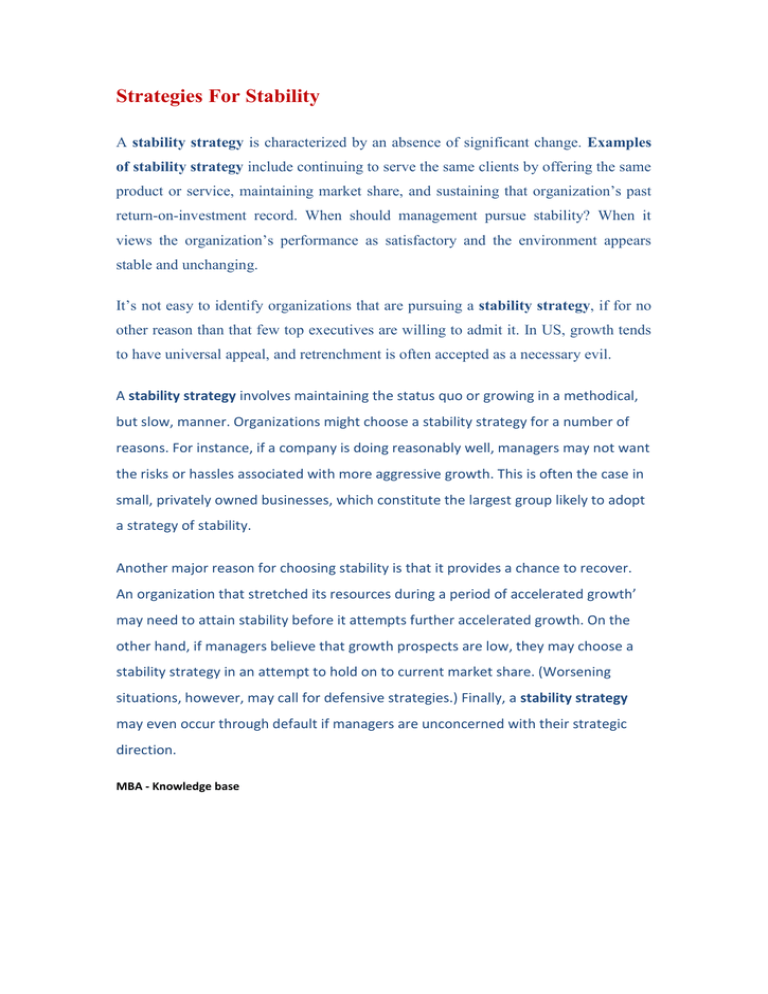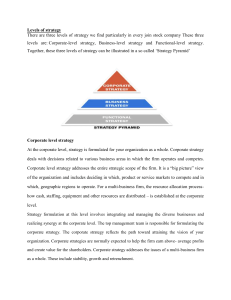Strategies For Stability
advertisement

Strategies For Stability A stability strategy is characterized by an absence of significant change. Examples of stability strategy include continuing to serve the same clients by offering the same product or service, maintaining market share, and sustaining that organization’s past return-on-investment record. When should management pursue stability? When it views the organization’s performance as satisfactory and the environment appears stable and unchanging. It’s not easy to identify organizations that are pursuing a stability strategy, if for no other reason than that few top executives are willing to admit it. In US, growth tends to have universal appeal, and retrenchment is often accepted as a necessary evil. A stability strategy involves maintaining the status quo or growing in a methodical, but slow, manner. Organizations might choose a stability strategy for a number of reasons. For instance, if a company is doing reasonably well, managers may not want the risks or hassles associated with more aggressive growth. This is often the case in small, privately owned businesses, which constitute the largest group likely to adopt a strategy of stability. Another major reason for choosing stability is that it provides a chance to recover. An organization that stretched its resources during a period of accelerated growth’ may need to attain stability before it attempts further accelerated growth. On the other hand, if managers believe that growth prospects are low, they may choose a stability strategy in an attempt to hold on to current market share. (Worsening situations, however, may call for defensive strategies.) Finally, a stability strategy may even occur through default if managers are unconcerned with their strategic direction. MBA - Knowledge base











